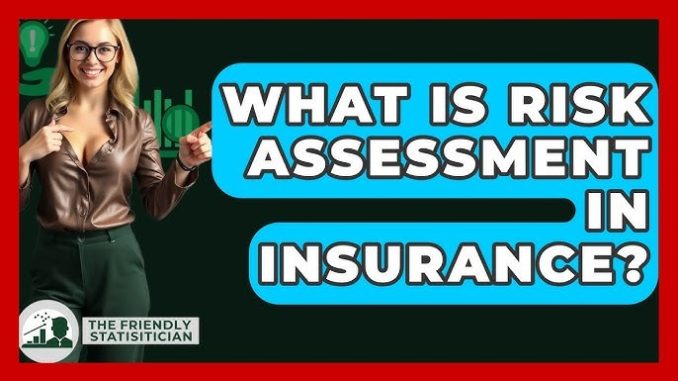
Risk assessment is the beating heart of the insurance industry. It’s the process that determines how much coverage a policyholder needs, what premium they’ll pay, and how an insurer prepares for potential claims. While it may seem like a dry, technical exercise, the science behind risk assessment is both intricate and essential. It blends mathematics, behavioral analysis, historical data, and predictive modeling to create a framework that allows insurers to make informed decisions. For policyholders, understanding this process can demystify how insurance works and highlight the value of transparency and accuracy when applying for coverage.
At its core, risk assessment is about probability. Insurers evaluate the likelihood of a loss occurring and the potential severity of that loss. This involves analyzing a wide range of variables, from geographic location and property characteristics to personal behavior and historical trends. For example, a home located in a flood-prone area will carry a higher risk profile than one on elevated ground. Similarly, a driver with a history of speeding tickets is statistically more likely to be involved in an accident than someone with a clean record. These factors are quantified and fed into actuarial models that help insurers calculate premiums and determine coverage limits.
Actuarial science plays a central role in this process. Actuaries use statistical techniques to analyze large datasets, identifying patterns and correlations that inform risk predictions. They consider frequency and severity—how often a type of claim occurs and how costly it tends to be. For instance, minor car accidents may be frequent but inexpensive, while house fires are rare but devastating. Balancing these dynamics allows insurers to price policies in a way that is both competitive and sustainable. It’s a delicate equilibrium, and even small miscalculations can have significant financial consequences.
Technology has dramatically enhanced the precision of risk assessment. Advanced analytics, machine learning, and artificial intelligence are now integral to underwriting decisions. These tools can process vast amounts of data in real time, uncovering insights that traditional methods might miss. For example, predictive models can analyze satellite imagery to assess property risk, or use telematics data from vehicles to evaluate driving behavior. This level of granularity allows insurers to move beyond broad categories and offer more personalized pricing. It also enables dynamic adjustments, where coverage and premiums evolve based on changing risk profiles.
Behavioral data is becoming increasingly influential in risk assessment. Insurers are looking beyond static information and considering how policyholders interact with their environment. In health insurance, wearable devices can track activity levels, sleep patterns, and heart rate, offering a real-time view of wellness. In auto insurance, usage-based models reward safe driving habits with lower premiums. This shift reflects a broader trend toward proactive risk management, where individuals are incentivized to reduce their exposure through better choices. It’s a more collaborative approach, aligning the interests of insurers and policyholders.
Environmental and societal factors also shape risk assessment. Climate change, urbanization, and economic volatility introduce new layers of complexity. Insurers must account for emerging risks that don’t fit neatly into historical models. For example, rising sea levels and more frequent extreme weather events challenge traditional property insurance frameworks. Cybersecurity threats, once considered niche, are now central to commercial risk portfolios. The science of risk assessment must continuously evolve to stay ahead of these changes, incorporating new data sources and refining methodologies to maintain relevance.
Regulatory oversight adds another dimension to the process. Insurers must comply with guidelines that ensure fairness, transparency, and solvency. Risk assessment models are subject to scrutiny, and pricing must reflect actuarial justification. This helps prevent discrimination and ensures that coverage remains accessible. It also reinforces the importance of data integrity. Inaccurate or incomplete information can distort risk profiles, leading to mispriced policies and potential disputes. That’s why insurers invest heavily in data validation and encourage policyholders to provide honest, detailed disclosures.
Communication is key to bridging the gap between technical risk assessment and consumer understanding. Many policyholders are unaware of how their premiums are calculated or why certain exclusions apply. By explaining the rationale behind underwriting decisions, insurers can build trust and foster more informed choices. For example, a homeowner who understands that their roof’s age affects their premium may be more inclined to invest in maintenance. A driver who knows that mileage impacts risk may reconsider their commuting habits. Education empowers consumers to engage with their coverage proactively, rather than passively.
Ultimately, the science of risk assessment is about creating a shared understanding of uncertainty. It’s a way to quantify the unpredictable and build systems that can absorb shocks without collapsing. For insurers, it’s a tool for sustainability and competitiveness. For policyholders, it’s a pathway to fair pricing and meaningful protection. As technology advances and risks evolve, the science will continue to grow more sophisticated. But its core purpose remains the same: to ensure that when life takes an unexpected turn, the safety net is strong, responsive, and built on a foundation of insight and precision.